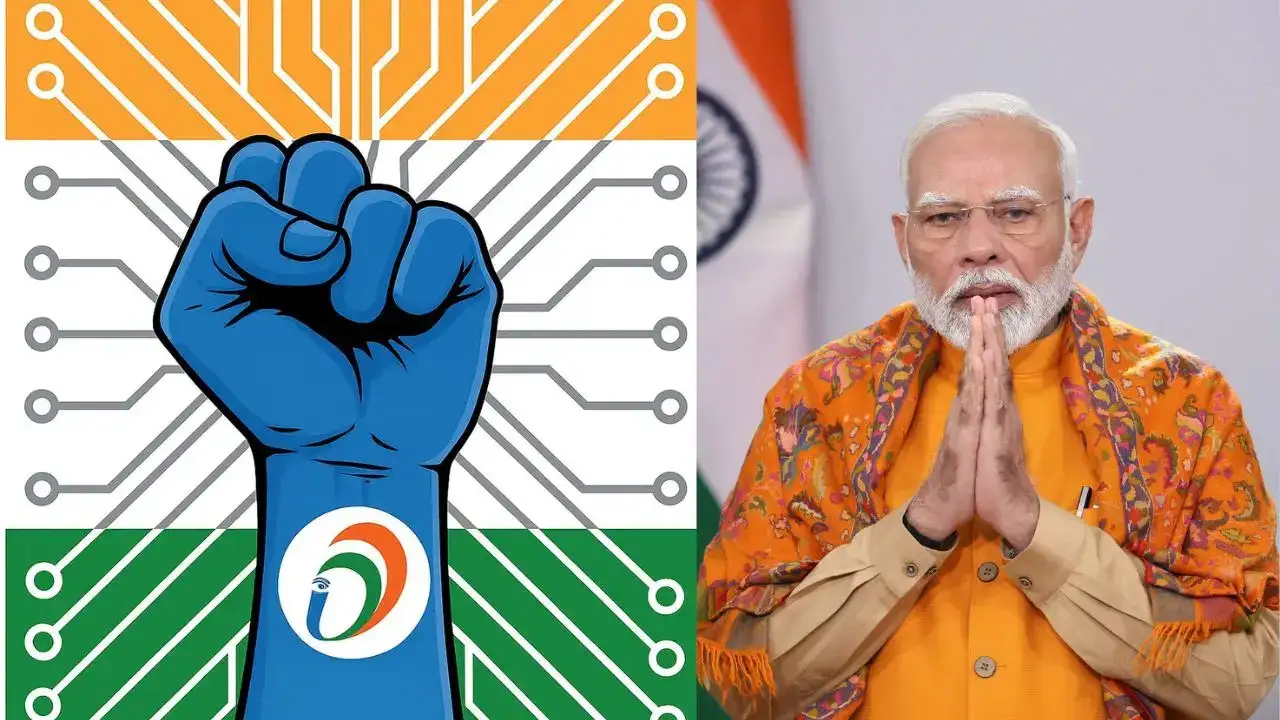By Samannay Biswas
Marking the tenth anniversary of the Digital India initiative, Prime Minister Narendra Modi on Tuesday described it as a transformative force that has evolved from a government mission into a “people’s movement,” fundamentally reshaping India’s governance, economy, and society. In a reflective article shared via LinkedIn, PM Modi wrote, “While decades were spent doubting the ability of Indians to use technology, we changed this approach and trusted the ability of Indians to use technology,” said a TOI report. Launched in 2015, Digital India aimed to democratise access to technology, improve governance delivery, and accelerate inclusive growth through digital infrastructure. Today, it stands as a global model, backed by a surge in connectivity, financial inclusion, and startup innovation. Connectivity and Digital Infrastructure: From Villages to the Himalayas According to the Prime Minister, internet connections in India have jumped from 25 crore in 2014 to over 97 crore by mid-2025, a rise of 285 per cent. Over 42 lakh kilometres of optical fibre—11 times the distance between the Earth and the Moon—now connects India’s remotest villages, thanks to initiatives like BharatNet, which has laid nearly 6.92 lakh km of fibre across 2.18 lakh Gram Panchayats. India’s 5G rollout, among the fastest in the world, now extends to high-altitude forward military zones such as Siachen and Galwan, reflecting the ambition and scale of the programme, said a report by TOI. Financial Inclusion and Global Benchmarks India’s fintech revolution is being hailed globally, driven by platforms like UPI (Unified Payments Interface), which now handles over 100 billion transactions annually. Direct Benefit Transfers (DBT), another cornerstone of the initiative, have disbursed Rs 44 lakh crore, eliminating inefficiencies and saving the exchequer Rs 3.48 lakh crore by removing fake beneficiaries. “From how we govern, to how we learn, transact, and build, Digital India is everywhere,” PM Modi noted, underlining its influence across sectors. Initiatives like SVAMITVA have issued over 2.4 crore property cards and mapped 6.47 lakh villages, ending generations of land record uncertainty. Economic Impact: Rising Digital GDP Share India’s digital economy contributed 11.74 per cent to GDP in FY 2022–23 and is projected to touch 13.42 per cent by FY 2024–25, according to data from the Press Information Bureau (PIB). Forecasts suggest it could account for nearly 20 per cent of GDP by 2030—a figure aligned with the exponential digital adoption across sectors. Empowering MSMEs and Global Partnerships India’s Digital Public Infrastructure (DPI) ecosystem has been extended globally. During its G20 Presidency, India launched a global DPI repository and announced a $25 million fund to assist other countries in adopting inclusive tech models. Domestically, platforms such as ONDC and Government e-Marketplace (GeM) have empowered MSMEs, local artisans, and women-led enterprises. PM Modi noted that “ONDC recently crossed 200 million transactions… GeM has crossed Rs 1 lakh crore GMV in just 50 days.” Other notable achievements include the widespread adoption of FASTag, DigiLocker, and CoWIN, all of which enhanced India’s digital service delivery during the pandemic and beyond. Startup Ecosystem and AI Push India now ranks among the top three startup ecosystems in the world, driven by Digital India’s enabling frameworks. With over 34,000 GPUs in circulation, India boasts the largest affordable compute infrastructure globally, supporting next-gen applications in AI, quantum computing, and cybersecurity. The government’s $1.2 billion IndiaAI Mission aims to position India as a global hub for AI innovation. “Digital India has not remained a mere government programme; it has become a people’s movement,” PM Modi concluded, reiterating the citizen-first philosophy that has driven its success.
